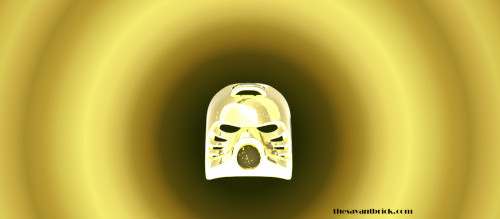
For the longest time, it seemed strange to me that the official LEGO BIONICLE.com was never treated like an integrated and universal content hub. Though the BIONICLE.com website no longer exists, even during it’s day, the site was never “The Source” of BIONICLE information for me – certainly not beyond the year 2003.
I got to thinking: what to make of that?
Throughout the years that BIONICLE was an active LEGO theme (2001-2010), the official website underwent an overhaul and redesign for each and every year of the products and story.
But in 2013, the end of the official website came: it was shut down alongside its counterpart BIONICLEStory.com, following the original discontinuation of the BIONICLE theme 3 years earlier.
When the “BIONICLE” theme was briefly relaunched in 2015-2016, an official site of course came back online with the new aesthetic. Then, with the cancellation of this “reboot” in 2016 – poof! LEGO sent the official site back into oblivion.
As of this writing, the website no longer exists.
BIONICLE.com Shut Down. What BIONICLE Websites Are Available Today?
Today, the BIONICLE fan community is very active – albeit scattered – online. Only a few dedicated websites specifically focus on archiving and displaying BIONICLE story content. Most BIONICLE content found online is now dispersed in the form of forums (often with a broader and general LEGO focus), fan pages, fan developer pages, wikis, and subreddits.
BZPower.com, with roots dating back to 2002, was among the first BIONICLE fan websites available. Today it remains the largest BIONICLE news and discussion site on the web, though since the retirement of BIONICLE, the focus has since shifted to include more general LEGO-related content.
The BIONICLE wikis – the largest of which is BioSector01.com – acts as a set and story database with comprehensive coverage of characters and locations, media and creators.
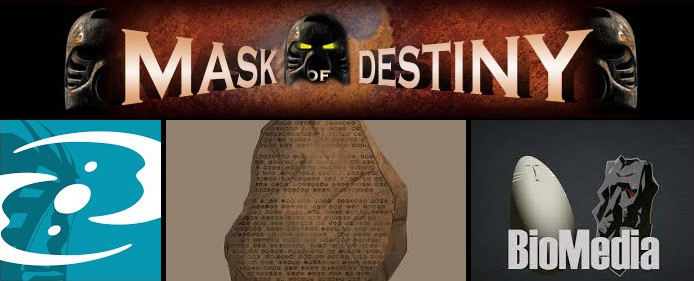
BioMediaProject.com is another long-running, fan managed archive of all-things BIONICLE media, including promotional materials, images, posters, animations, and games. Ooh la la …
Two other dedicated BIONICLE resource websites available today are WallofHistory.com and MaskofDestiny.com. The former site chronologizes the BIONICLE lore in order to function as an online archive of the complete and entire BIONICLE saga from 2001-2010.
Mask Of Destiny is the longest-running LEGO BIONICLE fan site on the web, operating since 2001 as a News and Collectibles resource. Today, the site acts as a bonding force bringing BIONICLE enthusiasts together for collaborative initiatives.
Interestingly, one of the most anticipated fan projects – the upcoming game, BIONICLE: Quest for Mata Nui – does not yet have a dedicated site… But that is a subject for another day!
So anyway… Overall, and perhaps obviously, the BIONICLE wiki/wikia can be useful for reference.
But not for understanding BIONICLE.
It’s like going to Wikipedia to get a synopsis or a plot summary. In doing so, you then feel like you “know” what the film or book is about. But in actuality, you don’t truly know. You haven’t experienced the film, you haven’t experienced the book.
And that is what I’m getting at here.
Stop the Tape! First: What Is a BIONICLE?
A prudent question, good reader!
This is a very special topic for me, which will be further explored in future posts. But for now, let’s stick with the cut-and-dry basics, shall we? So, I will not be waxing poetic just yet. Rather, I will be laying the groundwork.

BIONICLE is a portmanteau of the words “biological” and “chronicle”. As a LEGO theme, it mainly consisted of 3 things (or prongs, if you will): story, sets, and multimedia.
Let’s briefly take a look at each in turn.
Immersive Story: Learning BIONICLE
The BIONICLE lore is something unique in and of itself. It is a fantastic study in world building. However, I will not delve into that here. I would never get to the point!
So in a nutshell:
The BIONICLE premise originally began in the year 2001 as a fantastical (arguably science-fantasy) world which followed the quest of 6 biomechanical, elemental warriors. These warriors arrived on a troubled tropical island, without memory of their past. Nonetheless, the biomechanical tribal islanders welcomed the sacred warriors after relying on prophecies for over 1,000 years. The prophecies foretold the arrival of the heroes and their victory over the mysterious evil called Makuta.
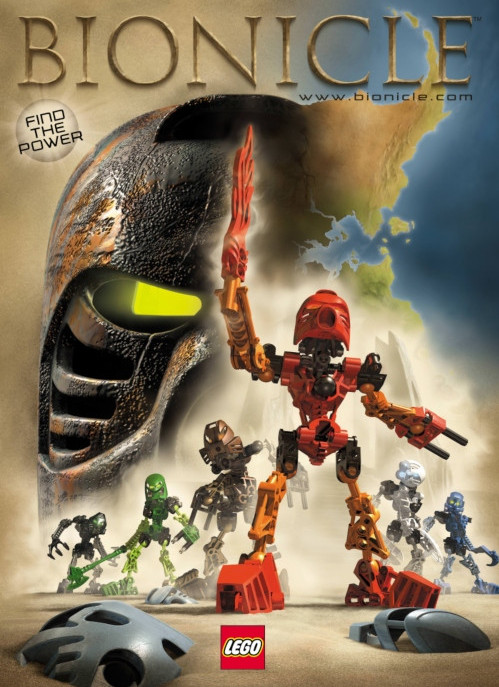
That’s all for now, curious reader!
Before BIONICLE, LEGO dabbled in including semi-structured stories and conflicts in themes such as Castle, Aquazone, and the Adventurers. However, as all fans alive at the time will remember, BIONICLE was the first truly original, fleshed-out story that LEGO included within a theme.
And it was enthralling.
Building Sets: Storytelling in Play
The first year that BIONICLE launched established the pattern that would go on to be used for most of the theme’s original decade-long run. There were small sets and intermediate sets (usually released in waves of 6 each), and larger complex sets.
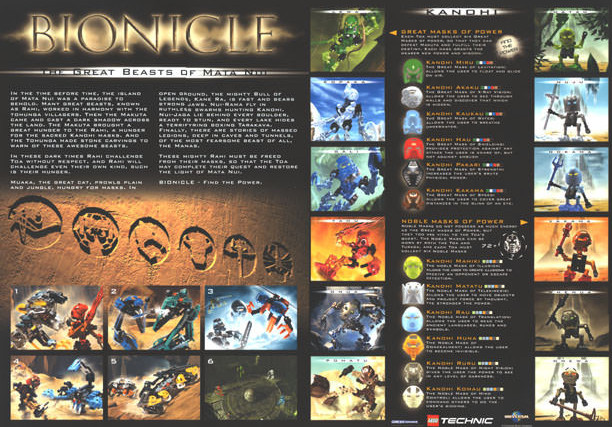
The first Toa sets, with the intriguing proportions of the figures, the canister packaging, and the beautiful packaging art, were easily the most iconic of the original BIONICLE theme.
In essence, with BIONICLE, the building and figures and story were all intertwined. The canisters were not merely toy packaging, they were the capsules from which the Toa emerged onto the tropical island! Even the canister lids served a storytelling function – they represented the shrines, which functioned in the BIONICLE story as nuclei for the Toa’s Mask powers! So cool.
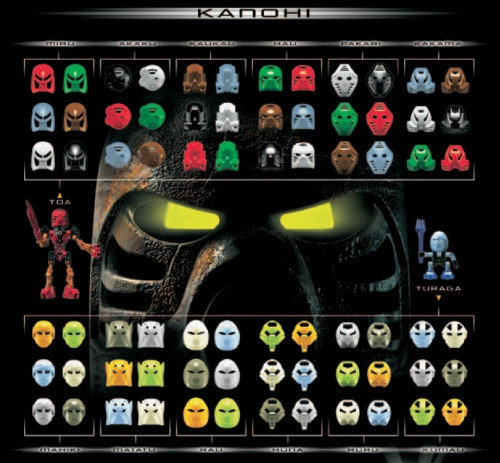
And then there were the collectible and colorful Masks, which had various degrees of rarity. They were available in small and inexpensive “Mask Packs”. Fans had to hunt down the desired Mask for their collection – just like the Toa, who in the BIONICLE world, had to find and collect the Masks in order to acquire additional abilities on their quest.
Interactive Multimedia: Assembling the Legend
Even though LEGO had previously produced PC, console, and online video games in the mid-to-late 1990s, no other media product at the time came close to the BIONICLE blitz.
BIONICLE was a multimedia experience! CG and Flash animations, promo CD-Roms, comic issues, and video games all carried their weight in adding to the experience of the BIONICLE world.
The video games especially were not designed to be merely nonsensical BIONICLE cash-ins. They contained snippets of story from the perspective of different characters – in short, the curiosity was simply too strong for me to not play them!
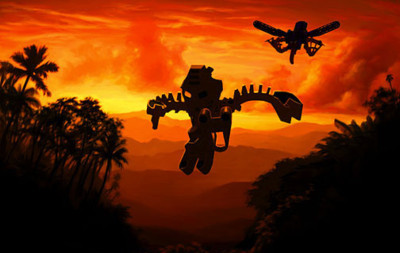
Games such as the Game Boy Advance title BIONICLE: Quest for the Toa and the web game called Mata Nui Online Game (MNOG), told segments of the original story as well as connected with other elements of the BIONICLE multimedia campaign. All the rich, simple content combined into an electrifying experience of the imagination.
Before we move on! I would be remiss if I didn’t mention the canceled game (planned for a PC and Nintendo GameCube launch) titled BIONICLE: The Legend of Mata Nui. The game was meant to be the culmination of the story focused on the Toa’s quest, but never saw the light of day…
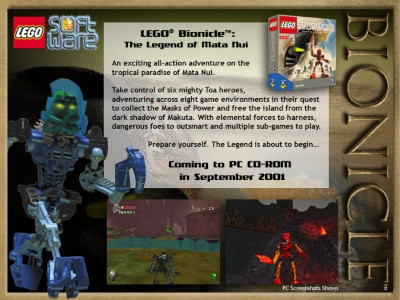
It has since become a holy grail for long-time fans, and only in more recent years has the game been partially acquired and rebuilt by dedicated diehards.
Overall, BIONICLE’s first year alone has quite literally become an iconic and curious artifact from another age.
What Led Up To the Creation of BIONICLE?
This is another big topic, which has been given a proper treatment in the book Brick by Brick: How LEGO Rewrote the Rules of Innovation and Conquered the Global Toy Industry – I recommend checking it out, along with some other great LEGO-related books!
In short: money and competition (or more specifically, the dire lack of it and the acute presence of it, respectively) led up to the launch of BIONICLE. After 1997, for the first time in about 50 years, the LEGO Group was not making a profit.
No profit, no LEGO! We can’t be having that!
So began a period of desperate experimentation and pushing boundaries, in a concerted effort to appeal to a new generation increasingly accustomed to gadget, entertainment, and information access.
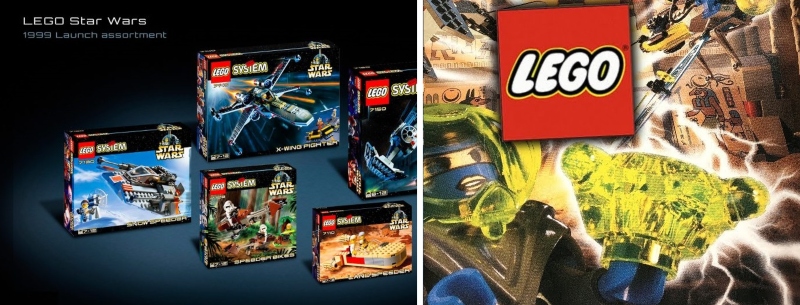
LEGO adapted, diversified, and grew from their roots in order to gain new success. I wish they would do so again in today’s day and age, but with a renewed focus on nurturing their roots… But I digress.
I would like to offer the LEGO Group some advice, just in case by some outstanding celestial alignment some powerful LEGO representative ever sees this:
Don’t become complacent.
Many fans are happy enough as is right now, with the junior sets targeting one audience, and the “big boy” sets appealing to another audience. Fair enough. But I know I am not alone in my growing discontent with LEGO’s withering originality, and if more begin to see what I see, the LEGO Group may once again slip right into a quagmire.
In my opinion, LEGO is approaching a juncture. The company can sit pretty on their successes. They can keep “making sets” and choose to turn a blind eye to their lack of thematic substance, and they may choose to only become reactive when cornered.
…Or the LEGO Group can return to the glory of their past and strive to reintroduce it to another generation.
Captivating BIONICLE 2001 – What Made It Lightning Beyond the Sales?
An Impactful Introduction to a Strange World.
One of the great things about the theme’s launch was the underlying mystery, foreshadowing, the room for expansion, and, the atmosphere of the world building.
Something about that time, dear reader, I swear, there was something in the air. Some kind of magic that is going absent today in youth entertainment. BIONICLE was a toyline aimed at 9-12 year-olds… and yet it had an air of melancholy maturity, without being obnoxiously dark or on-the-nose or adolescent. You could buy into the product – or not – and still get a robust experience of the imagination.
Speaking of atmospheric:
Now, I have never fully played the game Metroid Prime. However, in addition to remembering portions of it directly from the past, I have since then also revisited the soundtrack and gradually become more acquainted with it. Metroid Prime was from 2002.
But TALM, what does a game like Metroid Prime possibly have to do with BIONICLE? asks a skeptical reader.
I say: you in the back – hush! Don’t worry, this isn’t becoming a tangent. Let me explain.
The sense of exploration, the vibe, tone, and ambiance – all very BIONICLE-esque. Again, this Metroid title released in 2002, a year after BIONICLE became a hit.
A good game experience is (or at least used to be) defined by how much the game allows people to play it differently; the truly good game honored player differences rather than merely becoming an entirely linear, done-for-you, interactive “movie”.
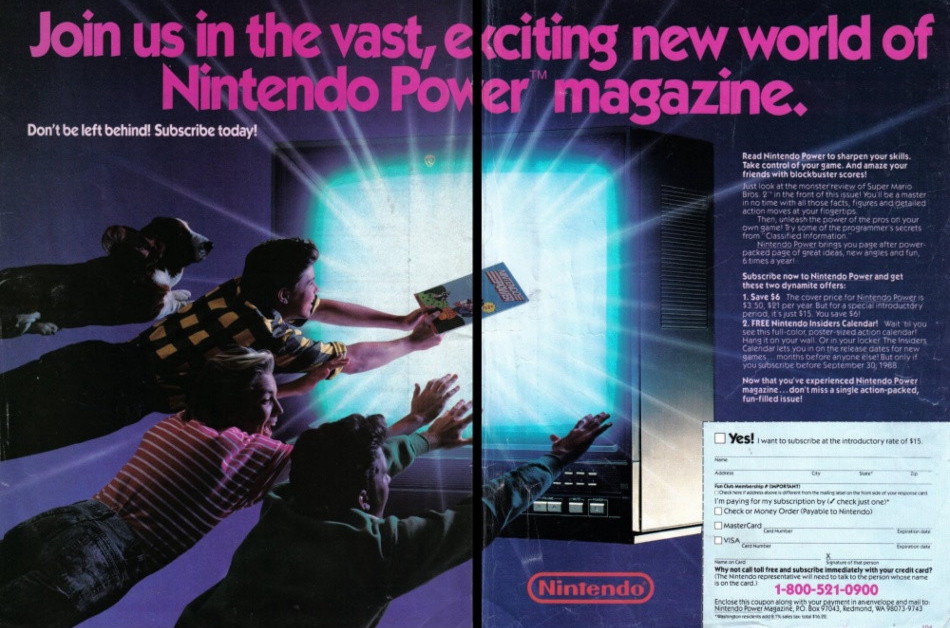
Video games and electronic entertainment in the early 2000s have since been recognized as one of the big competitors of LEGO products at the time.
I don’t think it was merely coincidence that the gaming principle mentioned above was applied to a story-driven play theme like BIONICLE… or that a game like Metroid Prime (which has since been acclaimed as one of the great games of its era) coincidentally applied a similar principle.
A basic and robust structure existed to play within, but ultimately – it was up to you for what you made up with BIONICLE!
Listen to the sounds, reader. Glorious sonic and visual ambiance.
Even though we fans did not know what it was at the time, we simply knew that there was more to the world of BIONICLE than what was immediately apparent. It created “playground rumors”, rumors on the web. It facilitated instant community. BIONICLE literally became a legend.
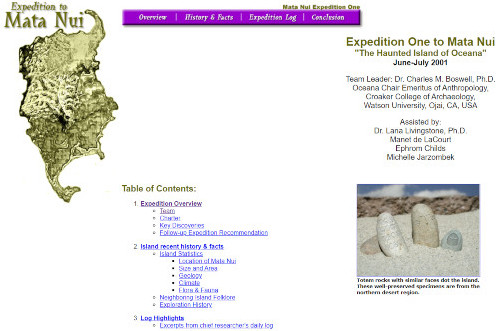
When I think about all this, I marvel at how the 2015 incarnation of BIONICLE could have been so way off base.
Like brickin’ really? LEGO BIONICLE 2015 showed a fundamental disconnect and lack of understanding about what made the original theme so great and unique. The 2015 attempt felt so derivative and inelegant. It attempted to vaguely mimic the original BIONICLE theme, and in-so-doing, a childish trope and cheap-looking cliché resulted.
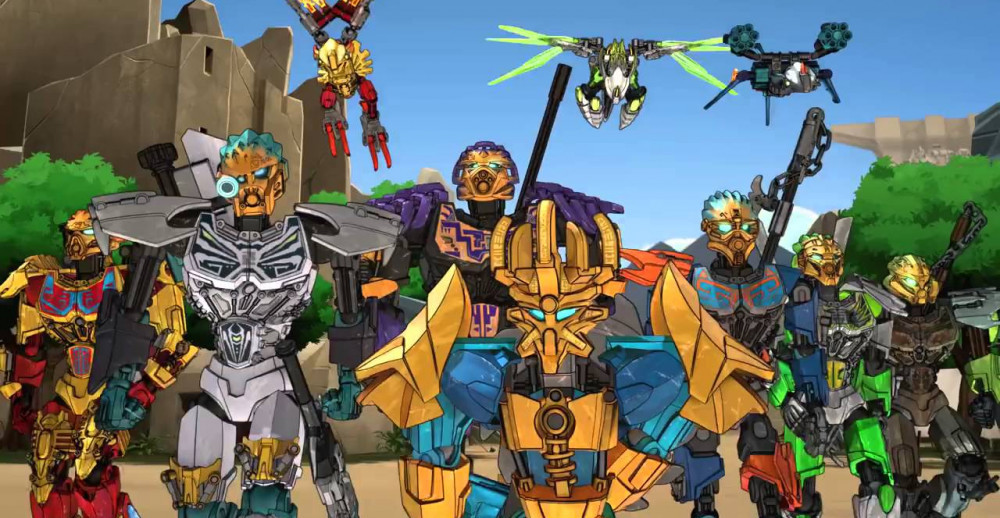
Forget blaming the marketing, the timing, the target audience, or the like… it was a fundamental thematic weakness and lack of curiosity that doomed the second incarnation. The original BIONICLE theme was actually derived from timeless cultural sources as well as the personal health struggle of one of the creators, both of which have stood the test of time.
Aside from the financial desperation of LEGO at the time, BIONICLE originally was born out of a very real place, a place that preceded the need for sales. It was original, exotic and yet eerily familiar.
That dichotomy captivated a generation of fans.
The Options for Engagement.
The breadth of multimedia at BIONICLE’s 2001 launch also played a huge role. Fans could assemble pieces of story via comics, CD-ROMs, even a board game! (Why didn’t we ever get a full-fledged tabletop role playing game out of BIONICLE? Anyway…)
The comics were bite-sized snippets that ended up doing more than merely getting kids hooked. The art style of the 2001-early 2003 comics, created by Carlos D’Anda and Randy Elliot, crystallized in many fans’ minds as the definitive and mythologic BIONICLE.
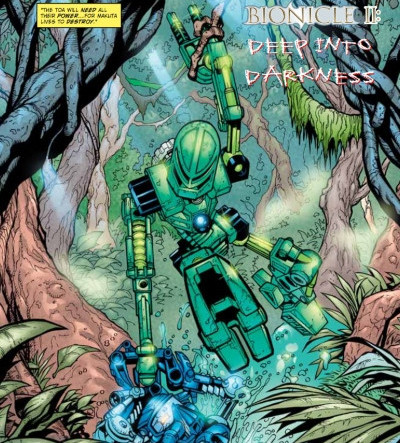
The collectibles aspect was another major “lightning” strike – it could easily have been a make-it-or-break-it situation. Arguably, BIONICLE never again had collectibles as good and as iconic as 2001-2002.
The colorful Masks were integrated seamlessly into the lore of the BIONICLE world, and functioned cleverly as a way to reinforce the value of the sets.
Promotional masks were reserved for special events held during 2001, and even they had a story-driven focus – an example being the “Copper Masks of Victory”.

However, and unfortunately, things did not continue to progress in this way for the remainder of BIONICLE’s original lifespan.
From 2004 onward, we saw dwindling multimedia (games gone, promo comics gone, CD-ROMs gone), and the reliance on brief episodic books tied into the 2004 and 2005 BIONICLE films.
With the notable exception of the Mata Nui Online Game II in 2003, all BIONICLE games after 2001 completely failed to add anything to the mythos and world. They merely became BIONICLE-themed products and character mash-ups.
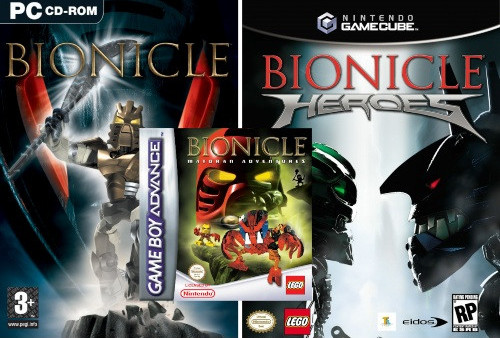
With that said, the thing is… fans can say that the comic art made the launch so great (true), or the iconic sets (true), or the collectibles (true), or this-or-that.
But fundamentally, what made BIONICLE so great upon launch was it’s elegant and subtle effectiveness in holding up a mirror to life.
What BIONICLE Wikia Won’t Tell You, And Why You Should Care.
BioSector01. BioMediaProject. WallofHistory.
These are all great resources available. Groups of dedicated fans have done some tremendous work in compiling and presenting a BIONICLE continuity… But to no fault of their own, something is still missing.
Folks who are just getting into BIONICLE for the first time today inevitably only get a truncated sample and overview of what the theme was like in its day.
So what is the solution?
Part of the BIONICLE experience was ephemeral. You had to experience it firsthand to really appreciate the engimas, speculation, and wonder in the moment.
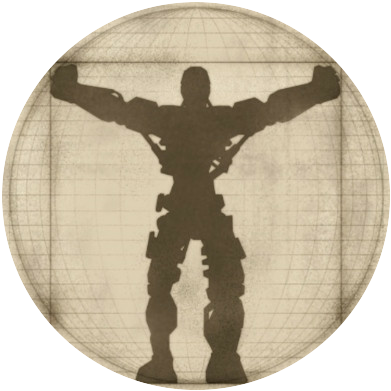
When I think about what is “missing”, I put myself in the shoes of someone discovering BIONICLE for the first time. Such a person (if they are above a certain age and short on time) could likely become too confused to bother trying to get into the story of the BIONICLE world.
Or, such a person could binge the continuity, and yet still miss out on so much of the original BIONICLE draw – delayed gratification.
Such a person might end up becoming a fan, or they might not.
It is a much more apathetic and passive, hit-or-miss linearity that remains today. Missing is the continual loop of anticipation and excitement for what the next BIONICLE wave of sets would be, the next story revelation, the next secret to be puzzled out.
The original BIONICLE experience required you to go out and do something to assemble it – it required action! Even the original catchphrase said as much: Find the Power, Live the Legend.

Today, everything is accessible, everything is instantly available at the fingertips – no wonder required or built up.
The multimedia bonanza of yesteryear, for better or worse, helped make the BIONICLE legend what it was. Though the creators of BIONICLE admit that they did not know how/if BIONICLE would succeed, it is clear that the LEGO Group banked a lot on a loyal fanbase growing up around it.
Otherwise, the sandbox structure of the puzzle-like BIONICLE multimedia would have simply been a bunch of pebbles swept away in the torrent of various electronic and entertainment media of the time.
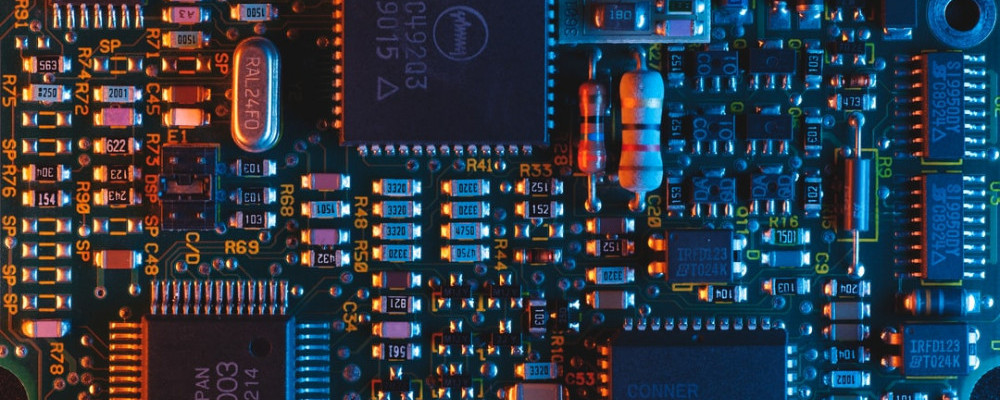
LEGO was counting on those “pebbles” being collected by fans and given meaning by fans. Otherwise, BIONICLE, for such a conceptually and visually strange theme, would have failed.
So what is the solution for the new and prospective BIONICLE fan?
Well of course, patient reader – a revived BIONICLE!
LEGO commands more resources, recognition, and ability than even dedicated fans when it comes to putting BIONICLE in front of a huge worldwide audience. The whole BIONICLE experience can only return if LEGO takes back the reigns and delivers a truly glorious return to form.
What does that look like, you may ask? I started to explain here.
BIONICLE needs to operate in the Iconic realm first, not the Canonic. I believe more generations of LEGO fans deserve to have the chance to experience it.
Learning the Secrets of BIONICLE: Concluding Pointers.
Believe it or not, there is more to be said on the subject of BIONICLE. But that is for another day.
Here are some concluding suggestions to get you on your way, if TALM’s flashback here has captured your interest. Getting into BIONICLE for the first time, or returning to it after ages away, can seem overwhelming and confusing, but it doesn’t have to be.
So what is the best way to learn the BIONICLE world today?
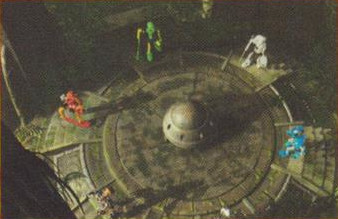
Learn the core 2001 basics. Then – and only then – consider the later canon, if you feel so inclined.
What I mean by this is: learn the fundamental lore and overarching concepts that resulted in the creation of BIONICLE. Try and see the framework and vibe firsthand as laid down in 2001 first and foremost, and to a (somewhat lesser) extent 2002-2004. Then let your imagination soar free!
Related:
Check out this discussion on what I have observed about why the 2001-10 BIONICLE lore weakened over time.
Here is a reconstructed version of the original BIONICLE.com websites as they appeared in 2001.
Unfortunately, a few pages are not operational, chiefly the Legend/Map page. However, an archived version of the original text can be found here.
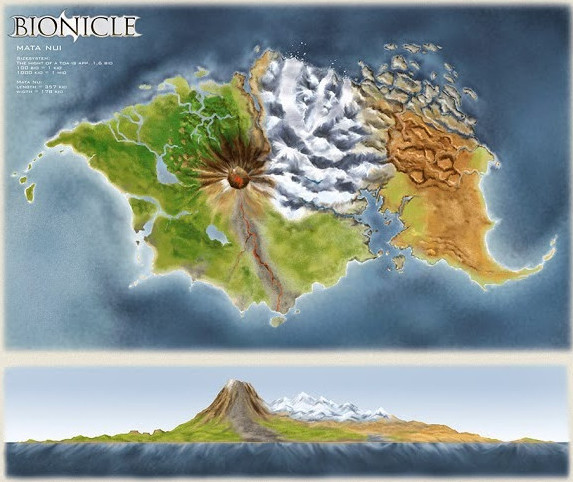
It’s also worth mentioning that passionate fans have been created awesome custom BIONICLE parts for years now. But if after reading this, you are looking for classic sets in the original collection, check out the latest eBay listings below for BIONICLE Toa, Masks, and bulk parts!
Pick up some great old-school sets with deals on eBay! Thank you helping support this site by making a purchase through the affiliate shopping links below.
What are you experiences or memories with the LEGO BIONICLE web scene?
If you have questions or anything else you’d like to share about this, be sure to leave your comments below!
}B^ ]

The Bionicle franchise has an interesting story under its belt. This is not common because usually for toy manufacturers, storytelling is just a vehicle to sell toys. So they don’t put too much effort into it.
I liked that there were these “Mask Packs”. I found it cool to be on the hunt for these masks.
Right on!
Isn’t it amazing how profitable BIONICLE became initially, when LEGO was more focused on putting their heart into the risk and the user experience, rather than being chiefly focused on the profit? Almost paradoxical.
I have yet to get serious about collecting all of the original BIONICLE Kanohi myself, but I too thoroughly enjoyed the “game-like” nature of trying to find specific masks back then. It brought an incredible level of tangibility and interpersonal interaction with the theme.
Very interesting story behind BIONICLE. I grew up with them but never realized they just disappeared. LEGO missed the boat totally when they didn’t build this into a game series. The story and artwork are certainly well done. I would think it would do well if it were re-released today. There would need to be a LEGO game and a movie to go along with the release but there should already be enough content to make it happen. The websites you found remind me of when I first ran across BIONICLE and I find I still enjoy the mystery.
It was a slow fade until the somewhat abrupt discontinuation came in 2010. You raise an interesting point about how quietly BIONICLE left the LEGO landscape and how easy it likely was for casual (or lapsed) fans to not even notice the disappearance.
You’re right that there is a lot of content for LEGO to draw from, if/when a proper BIONICLE re-release happens. More precisely, I think it is the strong 2001 (and pre-2001) foundational framework that carries the vast amount of weight and potential for LEGO to revisit and tap into.